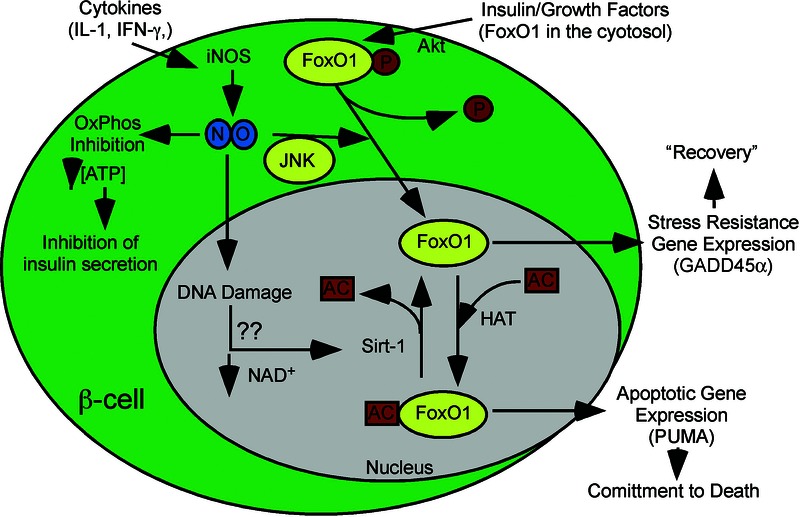Figure 5.

The pathways controlling the β-cell response to cytokines. Cytokines (IL-1 and IFN-γ) stimulate iNOS expression and the production of micromolar levels of nitric oxide in β cells. Nitric oxide stimulates the nuclear localization of FOXO1 that is associated with the loss of the AKT-mediated inhibitory phosphorylation. In the nucleus, FOXO1 directs a transcriptional program, as described in the legend to Figure 2. Mechanisms responsible for the regulation of Sirt1 activity are unknown, but irreversible DNA damage is associated with a commitment of β cells to death in response to cytokines. Decreased cellular levels of NAD+, associated with impaired mitochondrial oxidative capacity, may contribute to the regulation of this NAD+-dependent deacetylase. Overactivation of poly ADP-ribose polymerase (PARP) following extensive DNA damage is one potential mechanism of NAD+ depletion; however, we have shown that cytokines do not overactivate PARP-1 in islets.194
